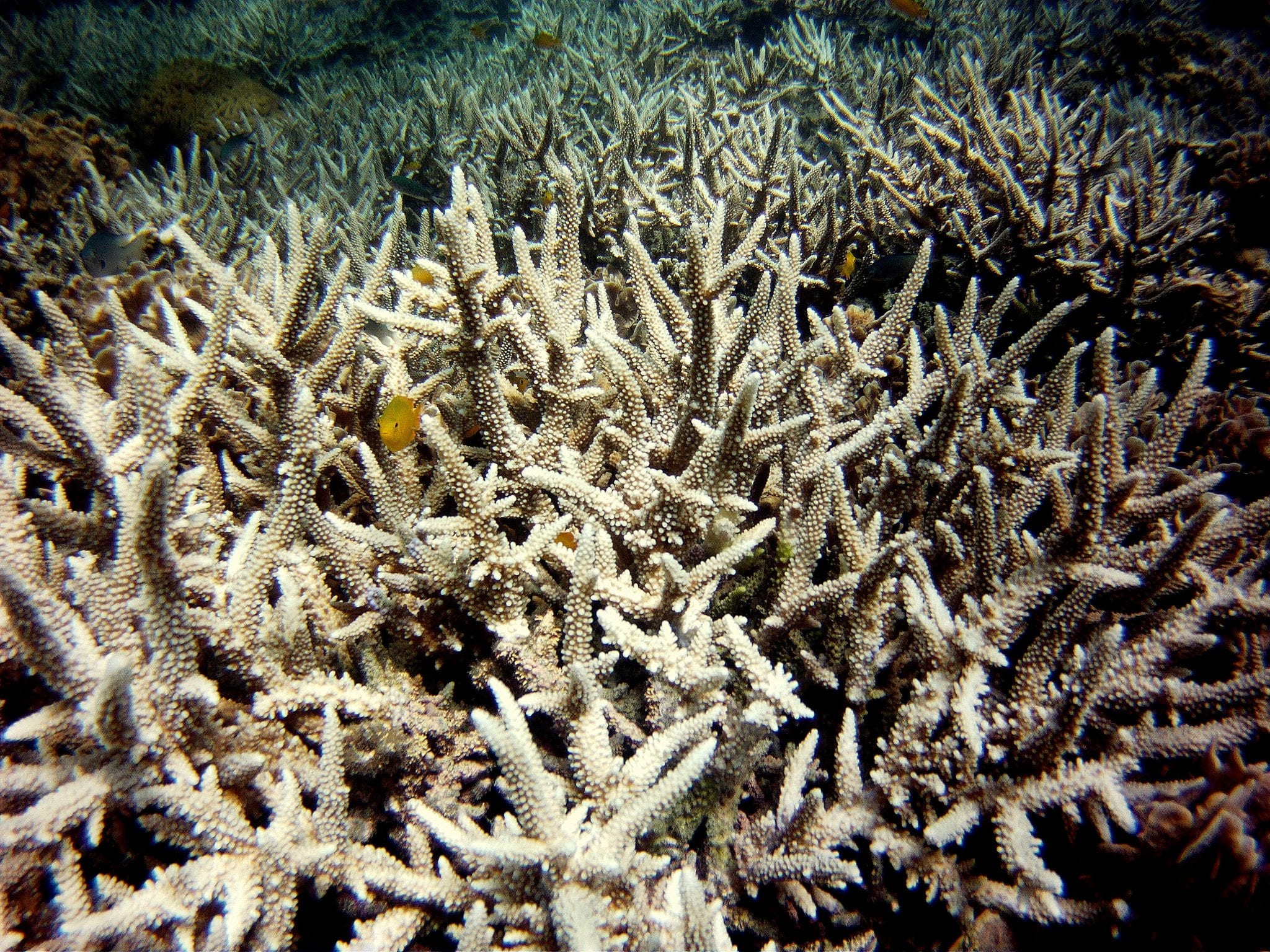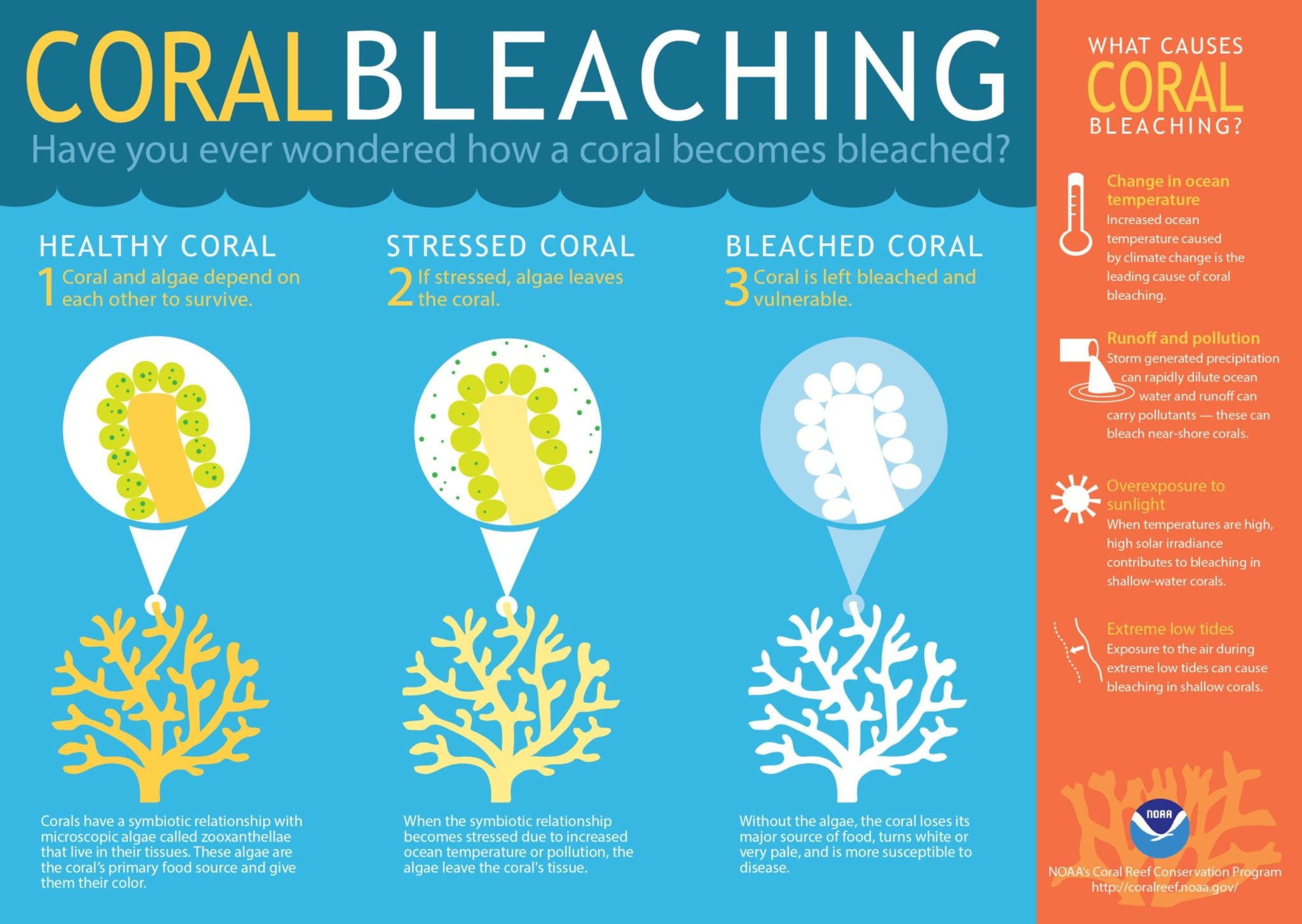Cloudbreak, Teahupo’o, Ho’okipa, Jaws”¦ some of the best waves in the world break over coral reef. And event if you’re not dreaming of kitesurfing these world renowned breaks, you’re probably fanaticizing about your next tropical trip: kiting the crystal clear flats while admiring the abundant wildlife swimming amidst the coral below.
As kiters, we need reefs to do what we love to do. But coral reefs also play a larger role than we may think. They help to prevent erosion, protect land from the harsh coastal elements and function largely in coastal tourism. And while you might not know it, you could unintentionally be polluting and leading to the decline of these crucial coral reefs.

PapahÄnaumokuÄkea Marine National Monument in the Northwestern Hawaiian Islands is home to 4,500 square miles of dynamic coral reefs. Unfortunately, as a result of climate change, vivid corals like these are threatened by coral bleaching. // Photo James Watt/NOAA
According to a study conducted in Hawaii, Israel and the US Virgin Islands and published in Archives of Environmental Contamination and Toxicology, Oxybenzone, a chemical found in over 3,500 sunscreens including brands such as Coppertone, L’Oreal Paris, Hawaiian Tropic and Banana Boat, was found to “pose a hazard to coral reef conservation and threaten the resiliency of coral reefs to climate change.” Oxybenzone is an endocrine disruptor, which means that it damages the DNA of both adult and larval corals, disrupts coral reproduction and development and increases the rate at which coral bleaching occurs. According to the US National Park Service, 4,000 to 6,000 tons of sunscreen enters reef areas each year (the majority of it containing Oxybenzone). According to this study, toxicity occurs at a concentration of 62 parts per trillion — that’s the equivalent of a drop of water in 6.5 Olympic swimming pool that means even the smallest amount of Oxybenzone can disrupt the reef.
The loss of reefs not only threatens local ecosytems but also the fishing and tourism industries that support many islands and coastal regions. “We have lost at least 80 percent of the coral reefs in the Caribbean,” says lead researcher, Craig Downs. “Any small effort to reduce Oxybenzone pollution could mean that a coral reef survives a long, hot summer, or that a degraded area recovers.” In Hawaii, the Department of Land and Natural Resources (DLNR) is asking people who enter the ocean to avoid using sunscreens that contain Oxybenzone. However, it’s not just watersports enthusiasts and kiters using sunscreen that are negatively affecting the reef, it’s anyone wearing sunscreen containing Oxybenzone. Regardless of having been in the ocean, if you shower after wearing sunscreen containing Oxybenzone, the chemical can wash off and enter the ocean via sewers and other waterways.
While it would be irresponsible and dangerous to stop wearing sunscreen altogether, we’re asking that you make a conscious decision in your sunscreen purchases, read the labels and look for reef-safe sunscreen without harmful chemicals such as Oxybenzone. We’re big fans of Raw Elements. Raw Elements Sunscreen products contain only natural and organic ingredients and are both reef-safe and biodegradable. They also won the Environmental Working Group’s #1 rating out for safety and efficacy out of a tested 1,800 U.S. sunscreen products. Good for you, good for the environment. 




